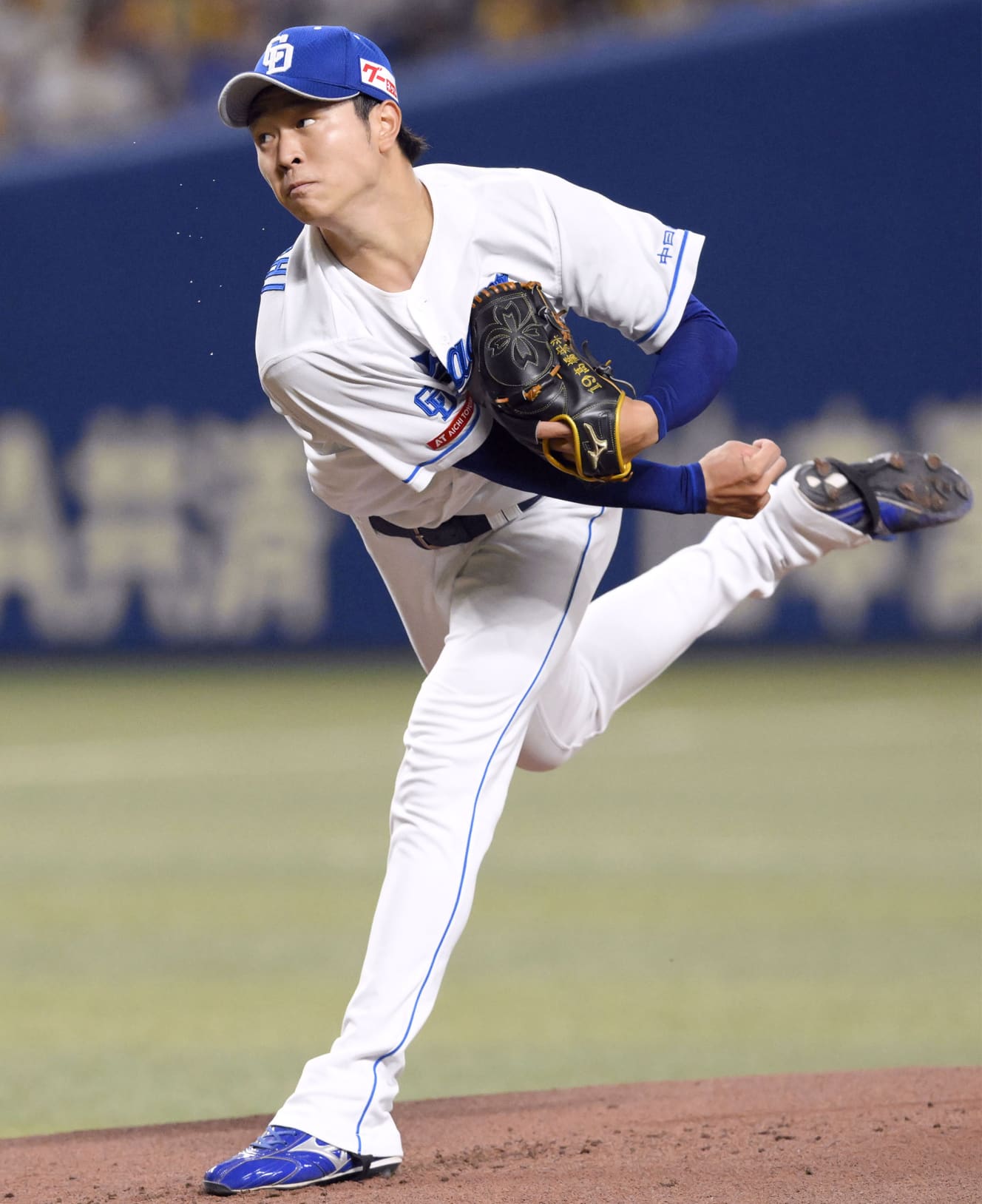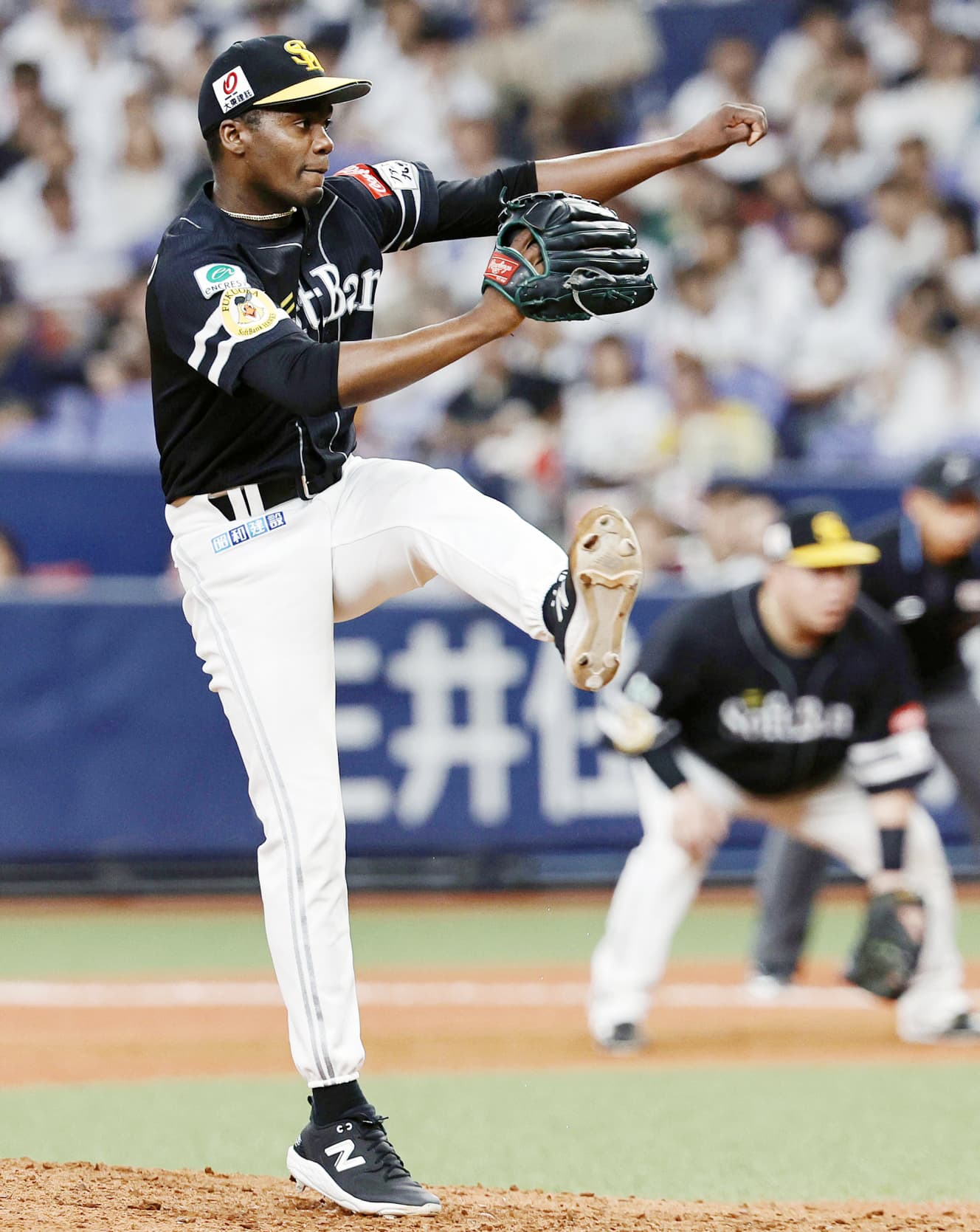The No. 1 Magic Pitch in Reiwa: Akinori Sasaki, Hiroto Takahashi, Tomoyuki Sugano… We look at the secrets of the pitches they know they can’t hit!
Akinori Sasaki's fork, Hiroto Takahashi's split, Tomoyuki Sugano's slider, etc. Bending, falling, swinging, sinking, stretching, etc.

Is there a “magic pitch” in the world of Japanese professional baseball?
The fork of Kazuhiro Sasaki, the great god of baseball, the sinker of Tetsuya Ushiozaki, the slider of Tomohito Ito, and the shot of Kenjiro Kawasaki. In the 90-year history of professional baseball in Japan, pitchers have thrown and refined more than 50 different types of pitches. Fans have come to call only a few of them “magic pitches,” the legendary pitches that have made the best of the best of the best in the history of Japanese professional baseball.
Among current pitchers, the “ghost fork” of the Mets’ Kota Senga (31) and the “floating slider” thrown by the Padres’ Yu Darvish (38) might be considered “magic pitches. So, in Reiwa 2024, does the “magic pitch” exist in the world of Japanese professional baseball? FRIDAY interviewed current and former players and umpires in both the Central and Pacific League.
Nobuhiro Matsuda, who retired last year after an 18-year career with Softbank and the Giants, said, “When I think of a magic pitch, the fork of Rakuten’s Takahiro Norimoto (33) first comes to mind.
Normally, when a pitcher throws a fork, the pitch floats. However, Norimoto’s fork never floats. Right after he swings it, it drops vertically from three meters before home base. Even though I knew it was coming, I couldn’t help but swing at it.
The lifeline of the man who switched to a relief pitcher this season and currently reigns as the Pacific League saves leader is still going strong.
Moving on to the Central League, the name of Hiroshima’s absolute guardian god was mentioned.
Ryoji Kuribayashi, 28, can’t hit that fork. I don’t know how it works, but his pitches all look white. You can’t see the seam. So you can’t tell by the rotation, ‘Here comes the fork! I don’t know how it works, but all his pitches look white. Moreover, it has the same drop-off as that of Katsuhiro Nagakawa, the original “ghost fork” user and current Hiroshima pitching coach, and it almost never drops out and comes in low. We have to wait for him to destroy himself by throwing four dead balls.
The big, falling fork has a strong image of being thrown by a reliever, but it is also the signature pitch of Reiwa’s monster, who pitched a perfect game in 1947.
Akinori Sasaki of the Lotte baseball team (22) has a fork that falls while swinging. Of course, the drop is great, but the trajectory is strange. Even if the pitch is not controlled as low as Norimoto’s or Kuribayashi’s, the bat still flies through the air. Perhaps there is a bit of a gyroscopic component to it,” said Mr. B, a coach for a Pacific League team.
According to simulations conducted by Professor Takayuki Aoki of Tokyo Institute of Technology and his colleagues using the supercomputer “Fugaku,” a fork with a gyroscopic component changes with each revolution under the influence of air currents.
Therefore, Sasaki’s fork, which is located near the ocean, swings and falls at speeds in excess of 150 km/h, taking advantage of the fickle wind direction of the “marine winds” at his home base.
The players of the Central League teams all say that Hiroto Takahashi’s (22) splits have become untouchable since the start of this year.
Until last year, all I had to worry about was his 158 km/h straight ball. The split was easy to identify as a count pitch and a decisive pitch. This year, however, the accuracy of my splits is off the charts. When I go to hit a straight ball, it suddenly drops like it disappears from sight. The velocity of the pitches is over 140 km/h, so it’s hard to tell the difference. That’s why he has the best defensive rating in the Central League,” said Mr. C, an infielder for a Central League team.
Impact that goes right to the bone
A high-speed split similar to Hiroshi Takahashi’s is also thrown by Yoshinobu Yamamoto (26) of the Dodgers, but Matsuda said, “Even with the same drop, Katsuki Azuma (28) of DeNA’s change-up is quite special.
He has a good arm swing, and his change-up falls away from the right-handed batter as if it were running away from him. You can’t hit it with that much slowness.”
A veteran Central League fielder, Mr. D, agrees.
I was so annoyed at being hit by a change-up that I kept it up all the time,” he said. Then it came on a sweet course, so I got full of it and went to swing at it. But it still swung and I struck out. I was swinging my arm as hard as I could, but the ball came slowly, and when I started swinging, it “stopped” again. Hiroya Miyagi (23) of the Orix also throws a similar change-up, although he has played against him less often.
Following the six names of vertical changeups, let’s take a look at horizontal changeups. The Central League team coaches, however, recommend the slider of Haruto Takahashi, 28, a left-handed pitcher for the Hanshin team, which was in a fierce battle with the Giants for the championship.
His slider, which bites into the right-hander’s inside pitch, is like a boomerang, with the bat and ball repelling each other like magnets with the same polarity. It also has a sharpness that can make left-handed hitters sit up. This year, he also started throwing a slider with a small bend, and I’m not sure what to make of it.”
Hiroshima ace Daichi Osera’s (33) cut ball bothers hitters from a different angle than Haruka Takahashi’s slider.
The cut ball has a small variation that hits the bat, but Osela’s ball is a little more aggressive. But Osela’s cut ball suddenly bites just before impact. When it hits the base of the bat, the impact is felt all the way to the bone, and it hurts.
Moreover, Osera sometimes makes the bend wider by the angle of his wrist or by pushing out his fingertips at the time of release. This does not hit the bat either. His personality and facial expression are soft, but the pitches he throws are egregious (laughs).
Tomoyuki Sugano, 34, of the Giants, who has made a complete comeback this season, is an undisputed slider pitcher.
He is a slider pitcher who is universally recognized as one of the best in the game. He can’t hit the ball out of the park, especially on the out-course,” said Tomoyuki Sugano, 34, of the Giants. That’s because the pitch has a big curve from the outset. It’s a breaking ball that takes advantage of the batter’s psychology: ‘It looks sweet, so I want to swing at it no matter what the pitch looks like. Seiji Kobayashi (35) caught it in the ball zone even though he thought he swung at the center of the ball.
Shinji Hashimoto, who umpired 1,147 games over 17 years in the NPB, recalls, “More than the slider, Sugano’s out-course straight is the magic pitch.
The batter swings at it off the end of the bat. Usually, a straight strikeout goes over or under the bat, but ……. He is actually a three-quarter pitcher, but the way he uses his body is sidestroke. His arm rotates sideways, which allows him to achieve a straight trajectory that runs away from the right-hander. It is never a cut ball-like change. But the right-handed batter’s bat could not reach it. It was the one and only straight ball.
Speed” that only those who have seen it at bat can understand
Mr. Hashimoto witnessed another “magic straight ball.
He was a pitcher for the Hawks, Tsuyoshi Wada (43). When he was young, he was a rather soft pitcher who used to compete with his breaking ball and control. However, as he got older, his pitches became faster. In particular, the way his low pitches grew was extraordinary. It carried a speed that did not appear on the speed gun. He must have good spin.
Yoshinobu Takahashi, once the Giants’ main gunner, described Masashi Yamamoto’s 140 km/h straight as “the fastest pitcher. There is a “velocity” in the professional world that only those who have seen it in the batter’s box can understand.
Hiroto Saiki (25) of the Hanshin baseball team, when he is in good form, has a straight line that hops as fast as Kubo Fujikawa’s. A normal pitcher’s straight line is about one minute long. A pitcher’s straight usually has a speed of 2,200 to 2,300 rpm, but in his case it is about 2,600 rpm. The ball doesn’t bow, so he swings under the ball” (Mr. E, above).
We have introduced 12 types of “magic balls” by 11 players, but there is one and only “magic ball” that everyone who testified to FRIDAY is unanimous in saying. It is the power curve of Softbank ace Livan Moinello (28), who dominated the Pacific League this season.
It has a huge drop-off. It drops about 80 cm. Even if you miss it because you think it’s a high ball, it will still come in low in the strike zone as a matter of course.
The moment the ball is thrown, it goes up with a pop. Normally, you would follow it with your eyes, but since the release position is high, you raise your chin and follow it. At that point, you have already lost. From there, once the ball comes close to the left-handed batter and makes him lean back, it falls off with a sudden brake. It’s a cliché, but it really is like a ball falling from the second floor. There is nothing you can do.
In his first year as a starter, Moinello is currently leading the race for the title of Best Defensive Ratio. Behind his success is the number one “magic ball” in the baseball world.
Who is the “Magic Pitch King” for our readers?






From the October 11, 2024 issue of FRIDAY
PHOTO: Kyodo News
